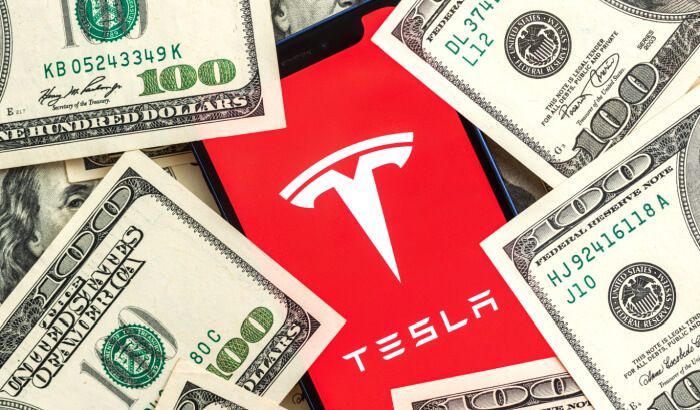
CFDs sind komplexe Instrumente und umfassen aufgrund der Hebelfinanzierung ein hohes Risiko, schnell Geld zu verlieren. 74,2% der Privatanlegerkonten verlieren Geld, wenn sie mit diesem Anbieter CFDs handeln. Sie sollten überlegen, ob Sie wirklich verstehen, wie CFDs funktionieren, und ob Sie es sich leisten können, das hohe Risiko von finanziellen Verlusten einzugehen.
Montag Oct 16 2023 14:01

5 min

Strong haven bid on Friday afternoon easing this morning. European stocks were steady at the open, Asia weaker with investors eyeing events in the Middle East with care. Fears of escalation remain the paramount concern for traders – Brent jumped 4% on Friday afternoon and gold rallied 3%, but both trade a bit weaker this morning. Nat gas slipped further after hitting its highest since January amid the Middle East tensions and fears Qatar might switch off the taps. Likewise, the dollar jumped to its best in a week late on Friday as traders didn’t want to hold too much risk into the weekend, but is trading softer this morning along with Treasuries which had picked up bid on Friday. The FTSE 100 was flat at the open on Monday at 7,600 with the DAX and CAC slipping marginally. The Nikkei in Japan slid 2% ahead of important inflation data this week. China tinkered with some liquidity injections but nothing major. Empire State mfg index and Fed’s Harker up later.
It was a very mixed week for stocks. The FTSE 100 added 1.4%, whilst the S&P 500 also rose 0.45% for its second straight week of gains. The Nasdaq Composite fell 1.2% on Friday to end the week down 0.2% even as Treasury yields slipped on haven bid, with the 10yr back to 4.68% this morning. Defence stocks rallied firmly last week, as did energy majors.
JPM boss Jamie Dimon:
“This may be the most dangerous time the world has seen in decades.”
A lot has been said about the Middle East. I don’t want to add any more of my tuppence worth. Except to say this: I believe we are entering a new long-term phase of global instability as the post WW2 consensus creaks and cracks under the strains of massive fiscal deficits, mass migration and deglobalisation – pandemic and inflation are both catalysts, we are in a new paradigm. Govts will raise more taxes, incur higher deficits and need to spend more on defence than they have done since the end of the Cold War. Back in April Christine Lagarde made a speech. I said this: "I read the words as a clear signal that we are about to go into a protracted economic (and maybe real) war, and it will require the mobilisation of the state and people – developed world central banks (Fed, ECB, BoE, BoC, RBA) will act together to orchestrate fiscal spending and suppress yields. So, you can forget 2% inflation. She said the world is seeing “more instability as global supply elasticity wanes” and may see “more multipolarity as geopolitical tensions continue to mount”. First Ukraine. Now Israel. We are seeing the anti-American axis making the conflict more horizontal...this is the multipolar world and it will get worse ...I fear this is the beginning of a multi-front, multi-phase, conflict - in essence a world war in the making - it won't be a straight nuclear shoot out with the Russians or Chinese or anything like, but fought horizontally on multiple fronts requiring ever increasing deficits and spending to finance our aims.
So ... inflation may have peaked but it’s going to be way stickier than hoped and linger. Friday showed UoM year-ahead inflation expectations rose from 3.2% last month to 3.8% this month. This 0.6 ppt move is the biggest in half a year and is not what the Fed would want to see. If we think we are in an inflationary paradigm morphing into stagflation, then return for risk is tough. BlackRock CEO:
"For the first time in nearly two decades, clients are earning a real return in cash and can wait for more policy and market certainty before re-risking. This dynamic weighed on industry and BlackRock third quarter flows." I stick to view of a multi-year range for stocks with the bottom still not in.
Meanwhile earnings are in focus. JPM saw net interest income jump 30% as it delivered better-than-expected earnings for the third quarter. Shares rose 1.5%, +9.5% YTD. Dimon again:
"Persistently tight labour markets as well as extremely high government debt levels with the largest peacetime fiscal deficits ever are increasing the risks that inflation remains elevated and that interest rates rise further from here.”
Tesla earnings will get the most attention this week. Shares have surged this year despite price cuts and declining sales growth. Deliveries hit 435,059 in the third quarter, up 27 on last year. But this was down 31k from the second quarter and fell short of Wall Street reduced expectations. Tesla said the sequential decline in volumes was caused by planned downtimes for factory upgrades and it stuck to its 2023 volume target of around 1.8 million vehicles. The key question is about margins – a series of price cuts this year has buttressed shares but seen its thumping profit margins decline eight percentage points to 18.2% in the second quarter.
